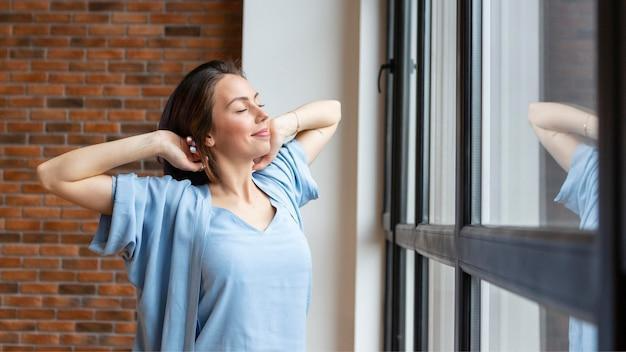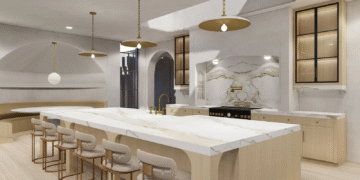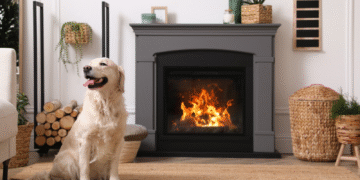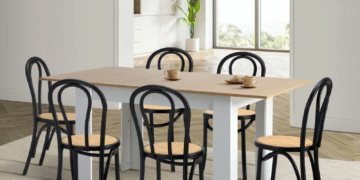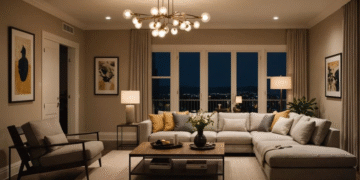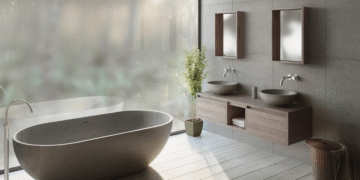We all love to enjoy the fresh air inside our homes. It can create a significant impact on your health and comfort. However, getting fresh air indoors can be challenging for most renters. You may even feel like you don’t have much control over the space you live in. However, it will not be possible for you to make any big structural changes, such as installing new windows or knocking down walls. Read the article we have prepared for you as we explore in detail the options available for property owners to improve the ventilation of their rental property.
Why Clean Air and Proper Ventilation Matter in Rentals
Breathing clean air is not just a luxury; it’s a necessity for everyone. Living with poor indoor air quality can lead to fatigue, allergies, and headaches. It can also cause long-term respiratory problems. However, many older buildings and rental units have outdated heating and cooling systems. Some don’t even have enough windows to ensure proper airflow.
As a tenant, you may feel that these issues are beyond your control. But before taking a look at the solutions, let’s first explore why having clean air is important.
For Health and Comfort
Good ventilation helps remove pollutants that get trapped indoors. Cooking fumes, cleaning product chemicals, mold spores, and dust all build up over time. They will continue to circulate without fresh air. As a result, your living space will feel stuffy or damp.
Clean can help you enjoy better sleep and live with higher energy during the day. Moreover, it can reduce allergy symptoms. Even a healthy person may have to deal with these health issues.
Daily Habits that Naturally Improve Air Quality
You don’t always need fancy equipment to freshen up your apartment. Here are some daily habits that you can follow to naturally improve air quality.
- Open windows strategically
You should check and see if it is safe to open the windows of your apartment. Tenants can improve ventilation by creating a cross-breeze by opening windows on opposite sides of the apartment.
- Use fans wisely
A box fan or ceiling fan can help circulate air. It is an effective method to prevent pockets of stagnant air. Make sure to point fans toward open windows to push stale air outside.
- Limit indoor smoking or burning
There are easy ways to reduce air pollution and prevent potential problems from happening. For example, cigarette smoke and frequent candle burning release harmful particles. Keeping these habits outdoors makes a big difference.
- Clean often, but gently
You need to dust, vacuum, and mop regularly to cut down on airborne dust. Additionally, you can use natural cleaners whenever possible to minimize chemical buildup.
- Don’t block vents
If your rental has central heating or AC, check that furniture or curtains aren’t blocking vents or returns. Clear airflow is essential for these systems to work properly. These habits, when practiced regularly, add up to a noticeable improvement in your living space.
Tenant-Friendly Air Quality Tools
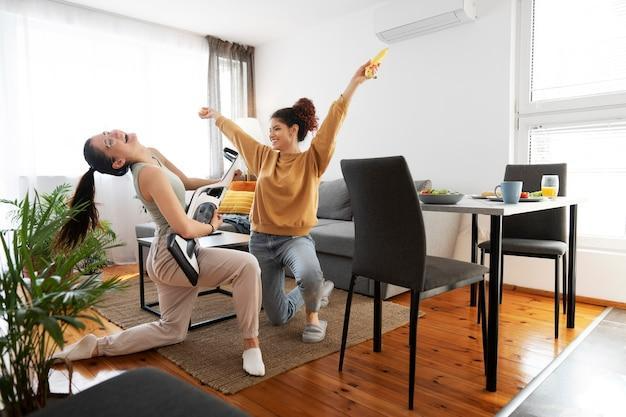
Sometimes habits alone are not enough, especially in rentals with high humidity, poor natural airflow, or older ventilation systems. Thankfully, there are small, portable tools you can buy and use without needing landlord approval.
Portable Air Purifiers
Air purifiers are one of the quickest and most effective upgrades to improve indoor air quality. These devices pull in air, filter out particles like dust, pollen, and pet dander, and then release cleaner air back into the room. Many modern purifiers also target smoke and odors.
When shopping for one, choose a purifier that’s the right size for your space. Check the “clean air delivery rate” (CADR) on the label to make sure it covers your square footage. Small tabletop models are ideal for bedrooms, while larger purifiers with HEPA filters are well-suited for living rooms or open floor plans.
Since they don’t require permanent installation, air purifiers are a tenant-friendly solution. You can take them with you when you move and continue using them in your next home.
Dehumidifiers for Moisture-Prone Areas
Moisture is the enemy of good indoor air. High humidity not only makes your apartment feel sticky but also encourages mold and mildew to grow. Mold spores can spread quickly, leading to musty odors and potential health concerns.
Dehumidifiers are simple plug-in appliances that reduce humidity levels. They are particularly useful in:
- Bathrooms without exhaust fans
- Basements or ground-level units
- Apartments in humid climates
- Closets or storage spaces where dampness lingers
By maintaining humidity levels between 30–50%, you enhance comfort and significantly reduce the risk of mold growth. Best of all, small dehumidifiers are portable and energy-efficient, making them easy to use wherever you need them most.
Other Helpful Tools
- Window draft stoppers to prevent outdoor pollutants or street dust from leaking inside.
- Houseplants like peace lilies and snake plants, which can subtly improve air freshness and bring natural beauty to your rental.
- Portable fans with filters, which combine airflow with particle capture for extra freshness.
These inexpensive tools give you more control over your air quality, even if your building’s ventilation system isn’t ideal.
Importance of Reporting System Issues with Your Landlord
While daily habits and plug-in devices go a long way, tenants should not overlook the role of their landlord in maintaining a safe living space. Rental owners are responsible for ensuring heating, cooling, and ventilation systems are in safe working order.
If you are already seeing signs of problems in your ventilation, it’s important as tenants to report them immediately to your landlord or property manager. Here are some tell-tale signs to look out for:
- HVAC systems that don’t push enough air or stop working altogether
- Persistent mold growth despite cleaning and dehumidifying
- Blocked or broken air vents
- Leaking windows or water damage that adds excess moisture
- Exhaust fans in kitchens or bathrooms that don’t function properly
Reporting these issues does two things. First, it protects your health and comfort as a tenant. Second, it documents the problem, which may help you if you ever need to escalate the issue with property management or local housing authorities.
Conclusion
As you can see, there are a few practical options available to improve the indoor ventilation of your rental property. Take a look at them and see what you can do. Then you can feel comfortable, rested, and energized inside your home. It can also make your life more enjoyable.


